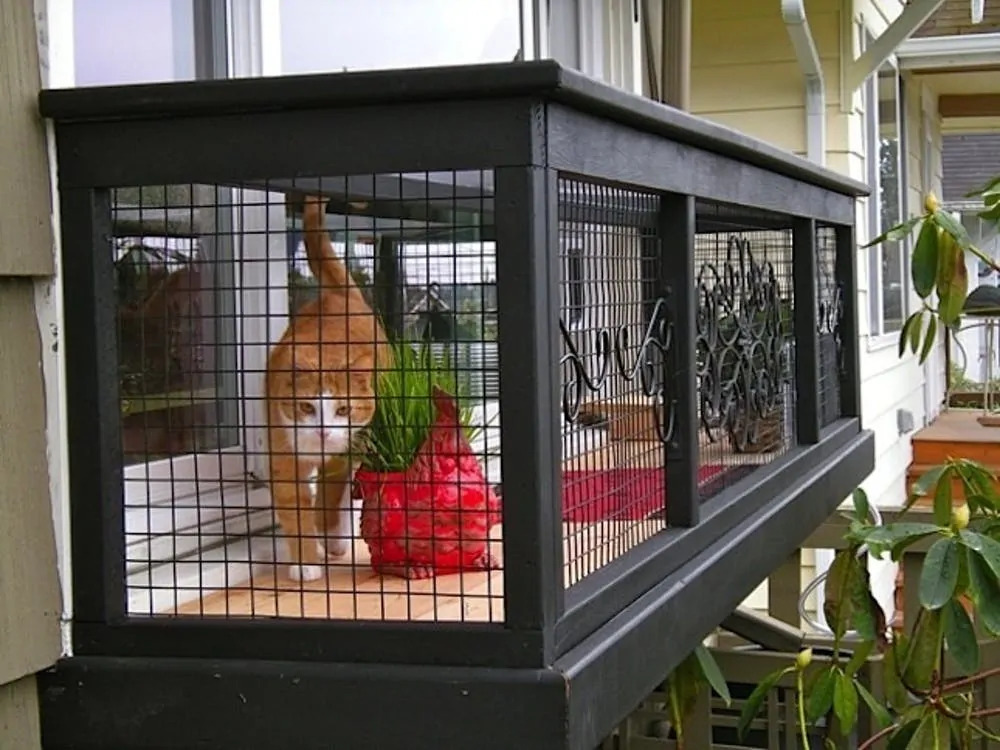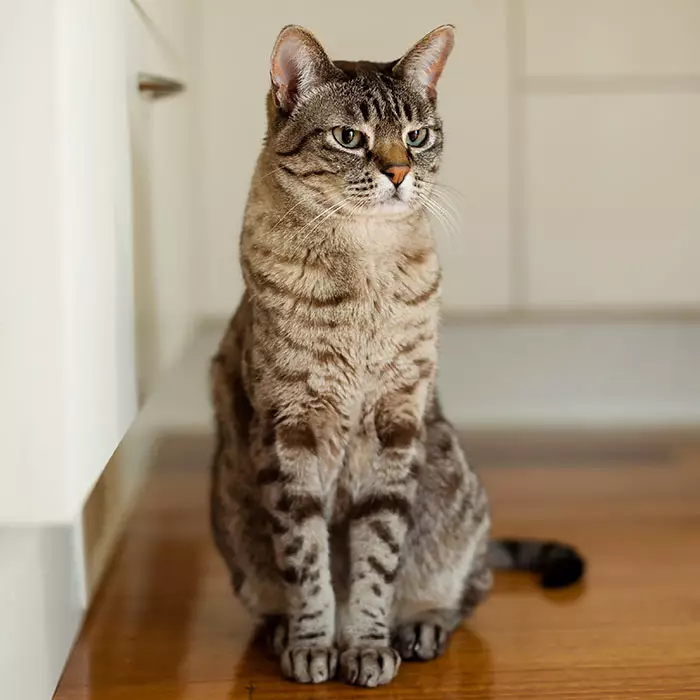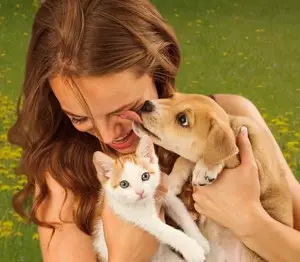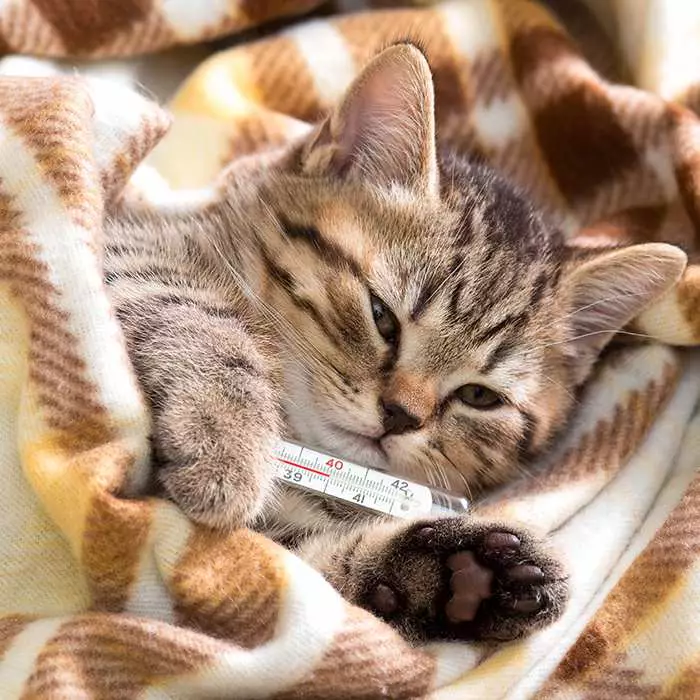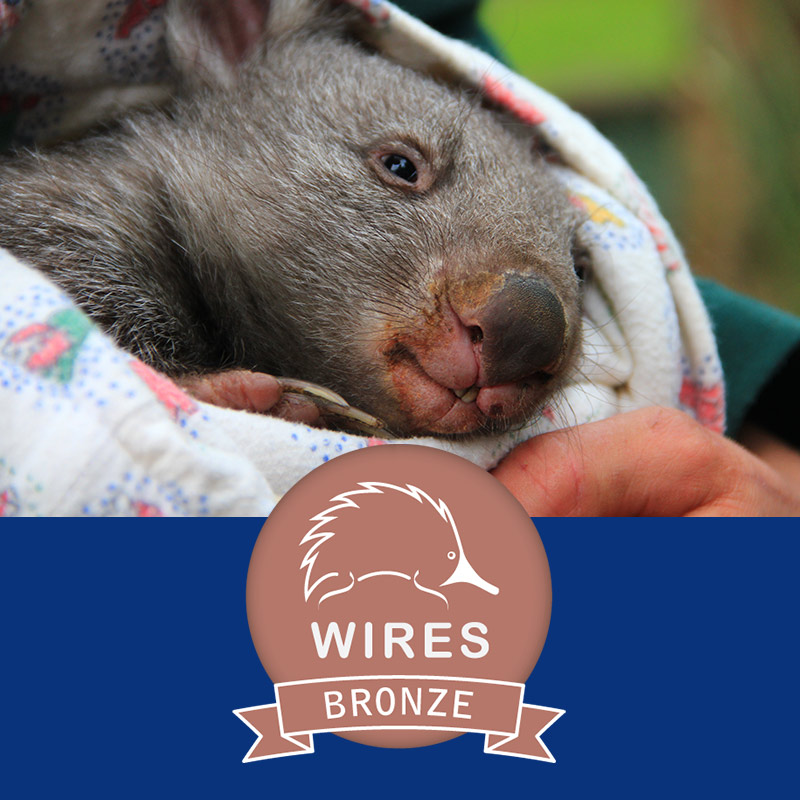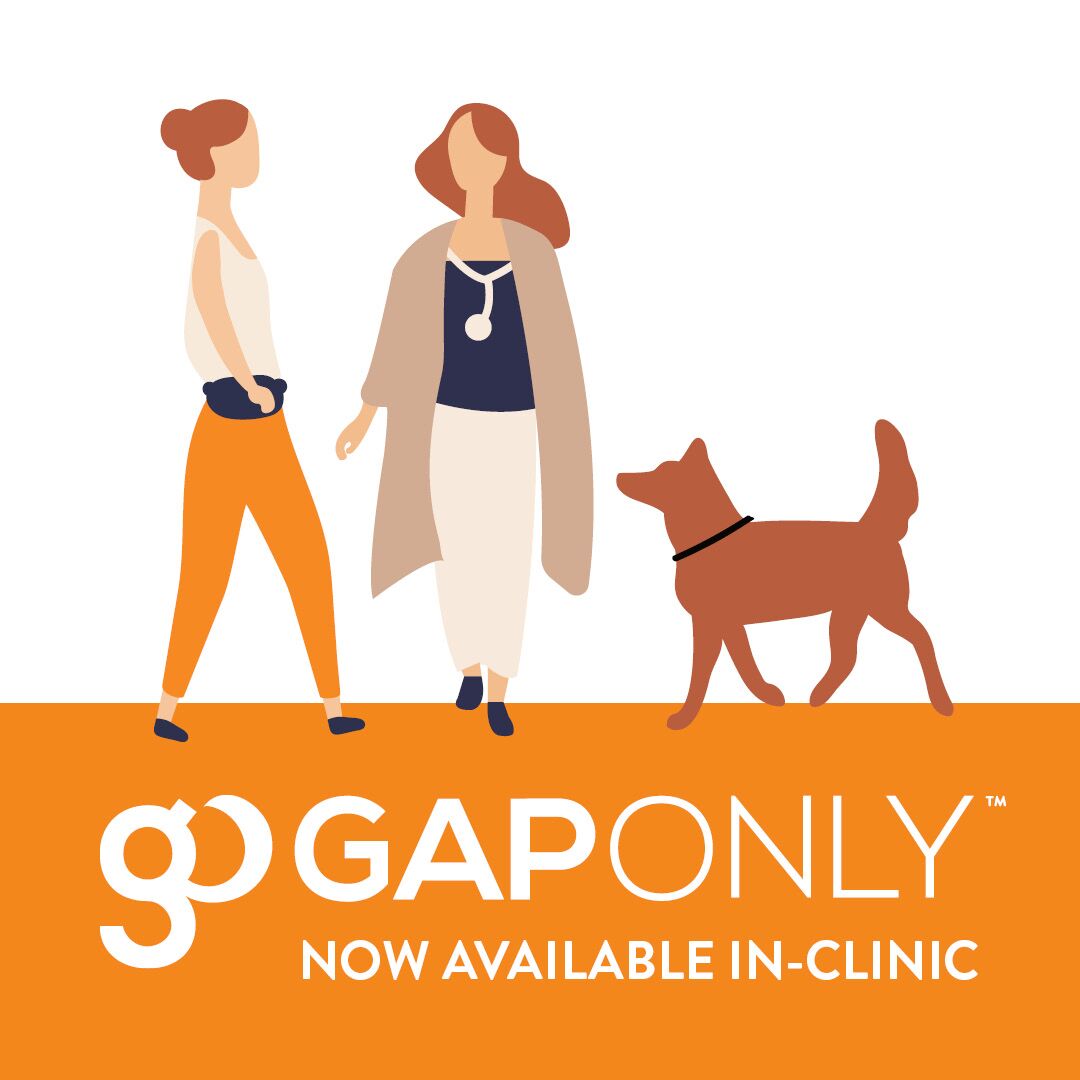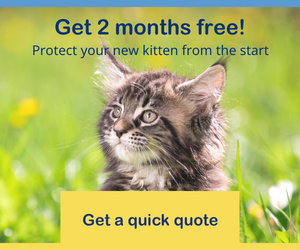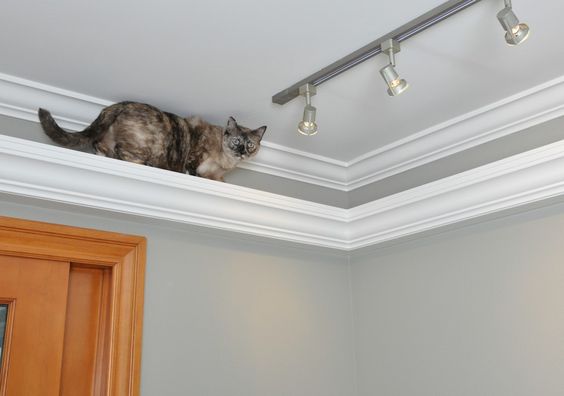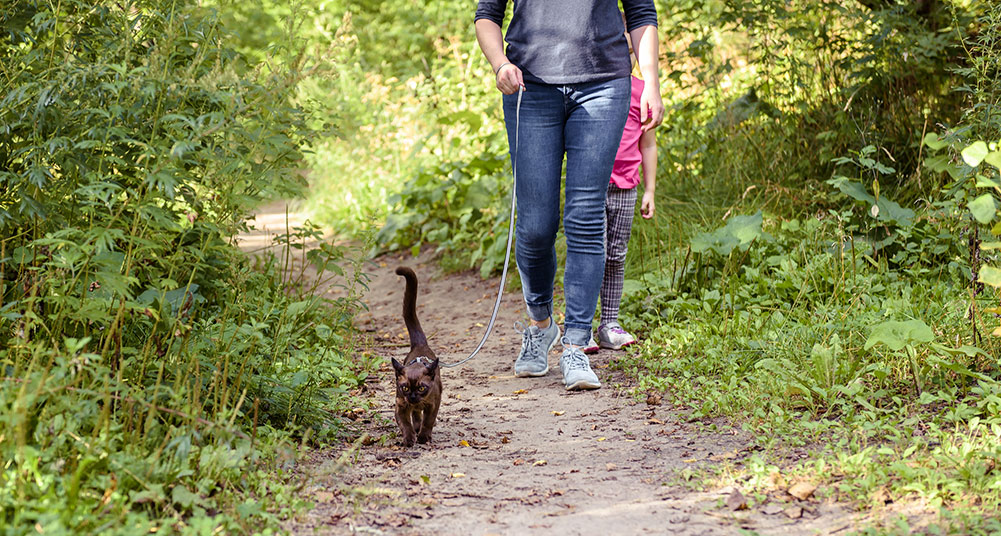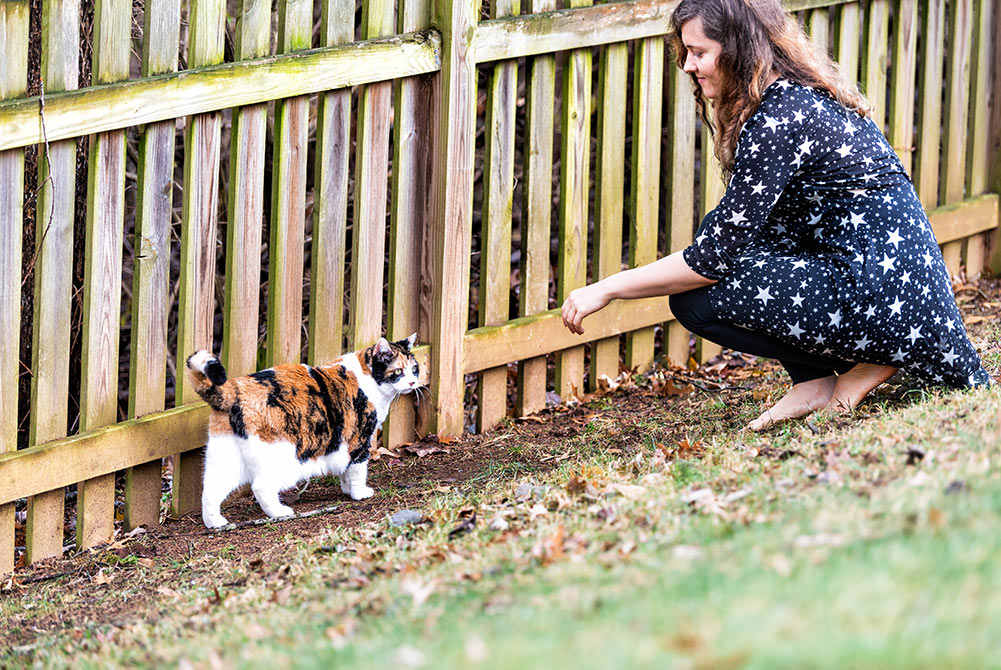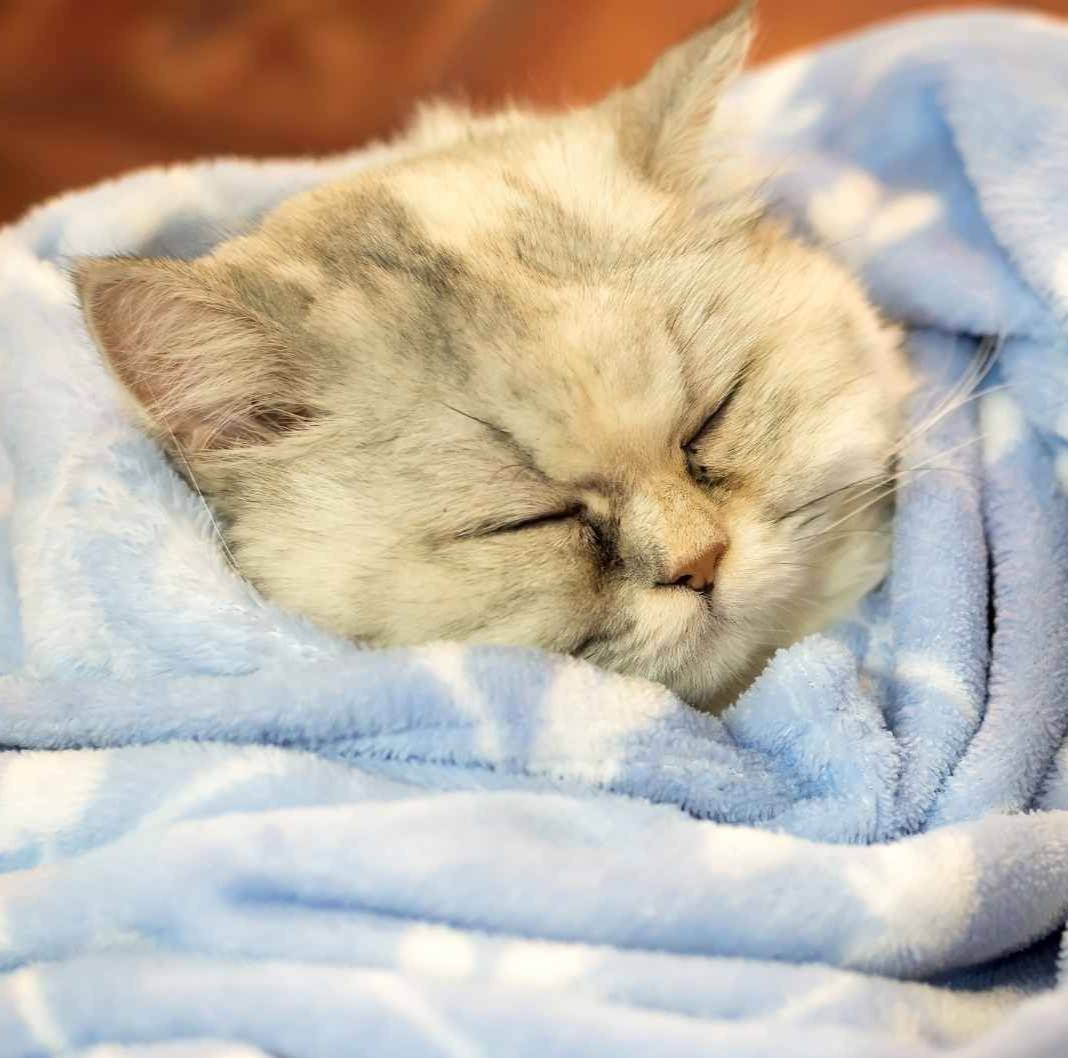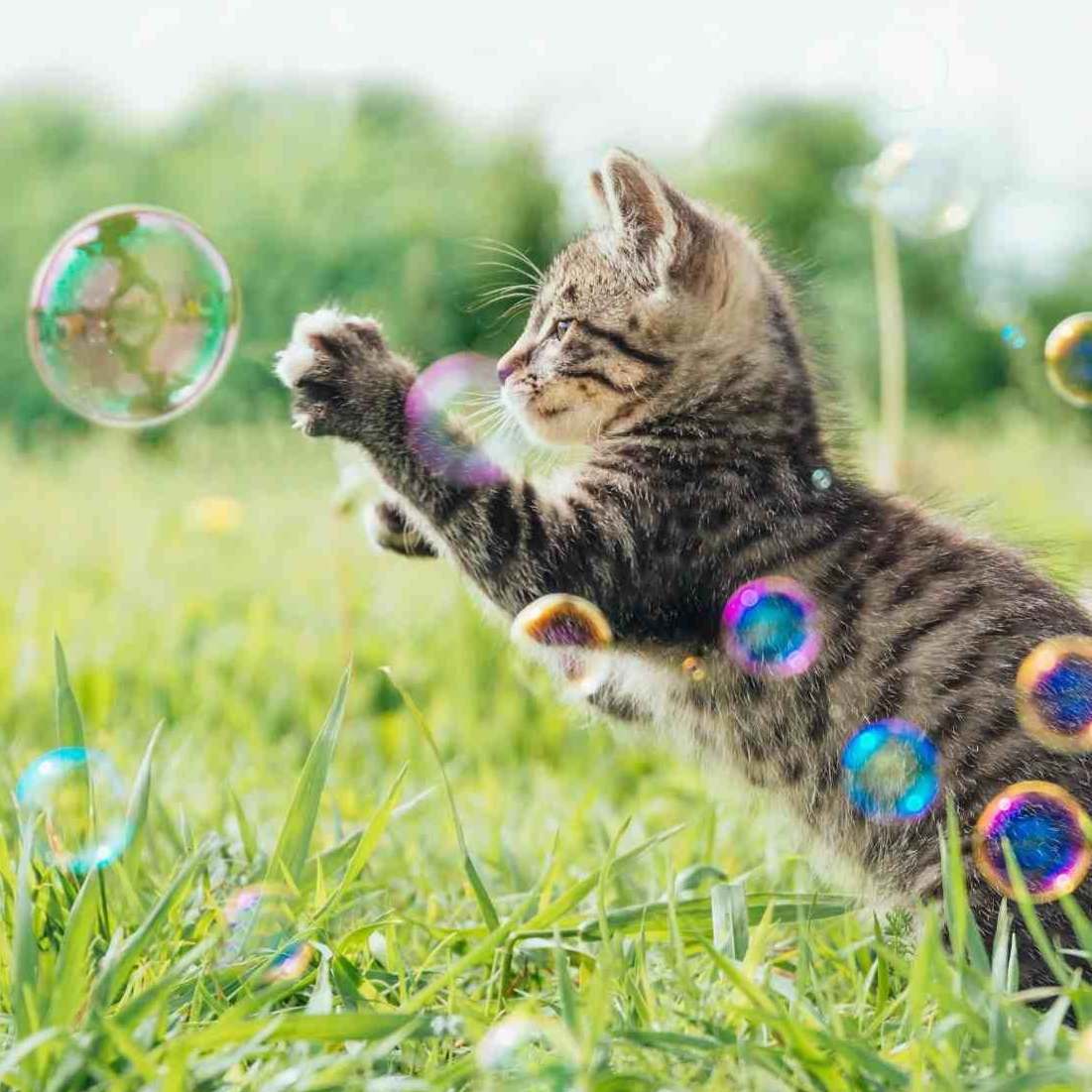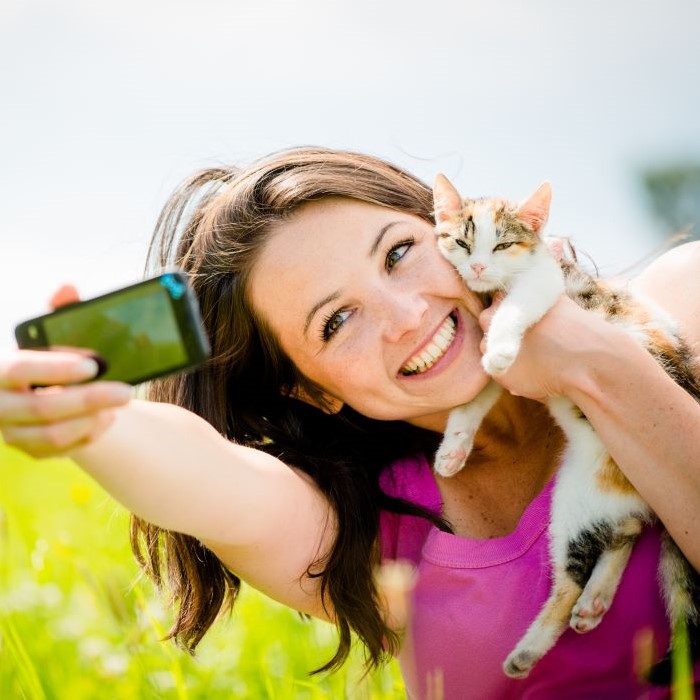Best outdoor enclosures & runs for cats in Australia
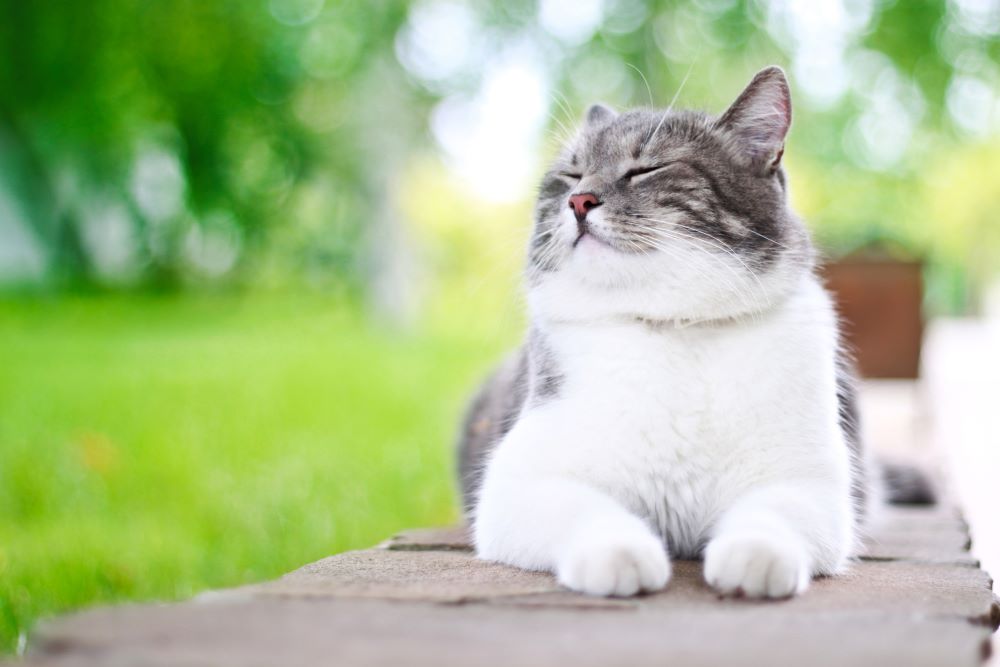
Australians have one of the highest rates of pet ownership in the developed world. A national survey found that in 2019, 27% of Australian households owned a cat, with the estimated cat population of 3.8 million cats. Our cats bring us many benefits such as companionship, affection and enjoyment. They also bring responsibilities and obligations to ensure that we give them the care that they need for a healthy life.
Cats need physical and mental stimulation in order to thrive. Outdoor access and exercise are extraordinarily effective with feline behavioural problems, so it’s essential that indoor-only cats have plenty of opportunity to obtain these. Giving indoor cats exposure to the outdoors in a safe and contained environment is the ideal solution, and not as difficult as you may think. One very effective way is to set up one or more cat runs and cat enclosures in your outdoor living space. An outdoor cat enclosure provides a safe place where your cat can enjoy the fresh air, sunshine, and sights and sounds of the outside world, and also have room to move and exercise.
Responsible cat ownership
Responsible cat ownership requires owners to consider not only the needs of their pets, but also the social environmental issues associated with keeping a pet. Increasingly, cat owners are becoming aware of the many dangers that outdoor roaming cats encounter. Cats who roam freely tend to have significantly shorter lifespans – by almost 10 years according to the Cat Protection Society – as a result of exposure to traffic, attacks from other animals, untreated health conditions, diseases and injuries, and weather extremes.
 Another consideration is that cats are hunters by nature, and outdoor cats pose a tremendous threat to native wildlife; even cats that are well-fed. For this reason, some councils have introduced by-laws to enforce night-time curfews or even complete confinement (contact your local council to find out if these apply in your area).
Another consideration is that cats are hunters by nature, and outdoor cats pose a tremendous threat to native wildlife; even cats that are well-fed. For this reason, some councils have introduced by-laws to enforce night-time curfews or even complete confinement (contact your local council to find out if these apply in your area).
There is a growing acceptance by cat owners of the benefits and need to contain cats, resulting increasing numbers of cats that are kept solely indoors. Most cats adapt well to living indoors, especially if this is undertaken from an early age. However, adult cats that are used to roaming freely outdoors may have some difficulty adjusting to this dramatic change in their lifestyle. If this is true for your cat, we recommend keeping him inside overnight, then gradually increasing the time you keep him in by day. Providing him with a safe and secure outdoor cat enclosure or outdoor cat run will go a long way in easing his transition to contained, indoor living.
Giving indoor cats room to roam
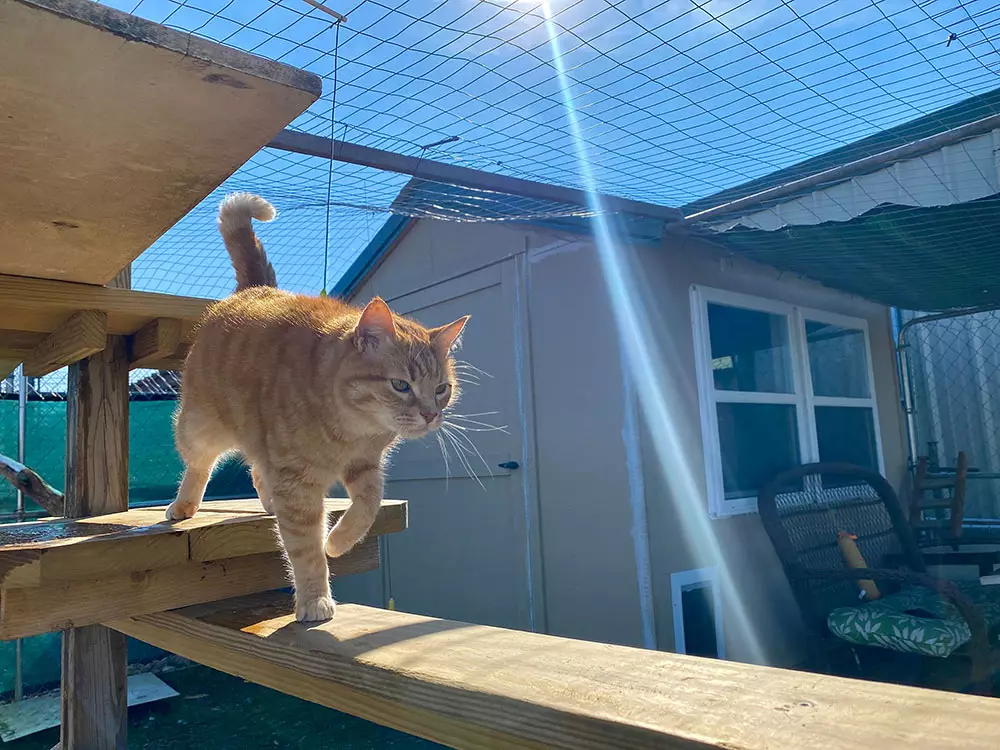
Whether you have a garden, backyard, veranda or balcony, there are options for providing a safe outdoor cat run or cat enclosure. The most common methods are to cat-proof your fence or to use netting to enclose all or part of your outdoor space.
Even if you have no outdoor access and/or a limited budget, there are things you can do to make the outside world accessible for your cat, including:
- Adapting or cat-proofing your existing fencing
- Installing cat-proof netting or screens around all or part of your garden, porch, balcony , side alley or window frames
- Purchasing or constructing a “catio”, or outdoor cat enclosure, with or without a cat run or tunnel to connect it to your house
Building one or more enclosed, tunnel-like cat runs along a fence, around the side of the house or even across the roof - A combination of the above, depending on the available area and what best suits your own and your cat’s requirements; for e.g. an outdoor cat enclosure can be combined with a runway or outdoor cat run along the fence that leads to a cat flap into the house.
If you find yourself confused about which type of cat run or enclosure is best suited to both you and your cat, here are a few things to consider:
- Do you have an outdoor area that can be enclosed, such as a garden, backyard, courtyard, porch, balcony, or side-of-house passage?
- How much space is available for an outdoor cat enclosure?
- What sort of activities does your cat enjoy (e.g. climbing, playing, or snoozing in the sun?)
- Do you want the outdoor cat enclosure to have access to your home via a window or cat door?
- Do you need your enclosure to be portable?
- Would you prefer to design and/or assemble your cat enclosure yourself?
- What is your budget?
- Do you own or rent your home? (If you are renting, you will need the permission of the owner to make any modifications to the property)
- How high is your fence or wall? Does it keep you cat contained to your property?
Cat-proof fencing
A regular fence may not prevent your cat from escaping or other animals from entering your yard. Cat-proofing your existing fencing is one of the simplest ways to ensure that your cat cannot leave your property and that other cats can’t get in. Cat-proof fencing also has the advantage of providing your cat secure access to the entire outdoor area around which it is installed. According to Animal Welfare Victoria, if you have a small yard then this may be a better and cheaper alternative to building a cat enclosure. An ideal position for cat proof fencing is the narrow corridor between the house and a fence that can be closed off at each end by gates.
To cat-proof your fencing, you need to ensure that your cat cannot get over the top of it, either by raising it or installing an escape barrier on top. You will also need to seal any gaps or holes in or under the fence, make sure that it has no escape routes such as overhanging trees or other climbable structures or jumping points, and that the garden itself is safe by making toxic plants, garden chemicals and other dangerous objects inaccessible. Cats can be very resourceful, so even with these precautions, it is advisable to monitor your cat when you allow him outside in your yard.
Several cat-proof fence suppliers and installers are available in Australia and there are also many affordable DIY options using items such as shelf brackets and chicken wire, nylon mesh or even chain link fencing to create a suitable overhang on top of the fence (see How to build a cat proof fence using a net barrier). In most local government areas in Australia, fence extensions and raising the height of your fence is legal unless extending beyond your property boundaries (i.e. any protrusions are on your side of the fence). However, it is recommended that you check with your local council, and gain your neighbours approval, and the owner’s if you are renting, before making any modifications.
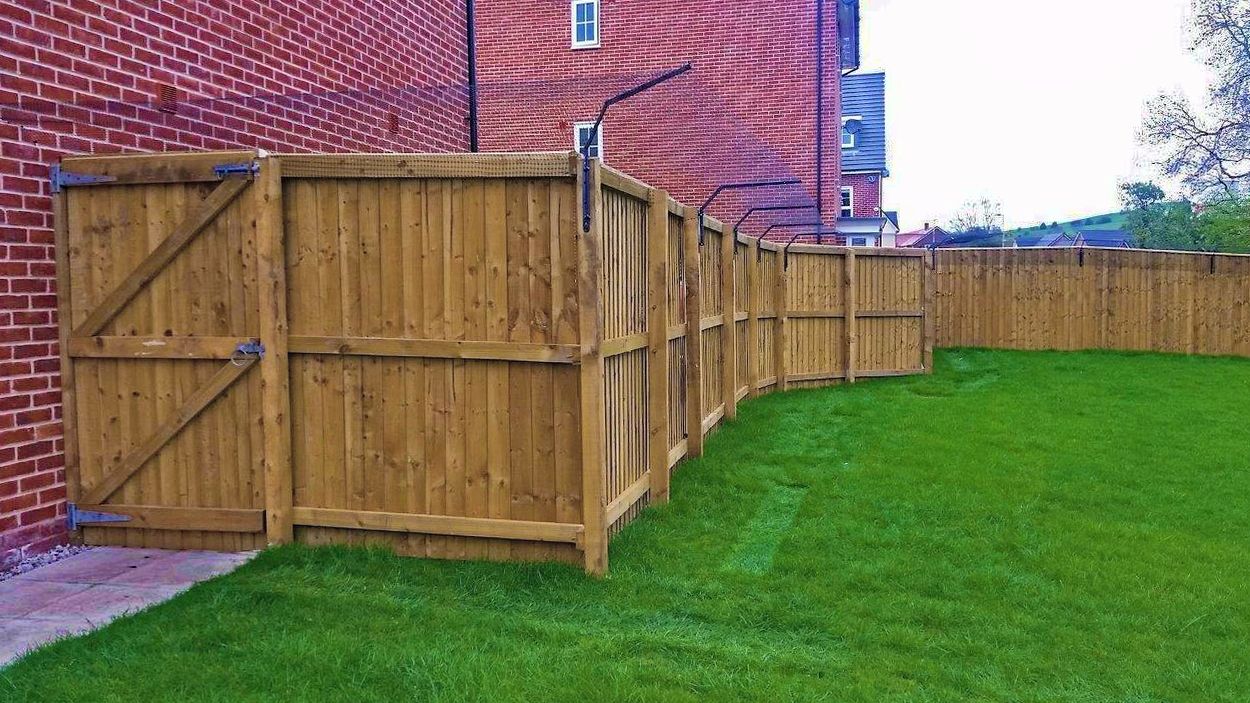
Oscillot® sells an unobtrusive fence-top cat containment device comprised of a series of paddles that are installed consecutively, one after another, for the length of the fence line (or area to be cat-proofed). When the cat tries to jump and scale the fence, he places a paw on the paddle, which then spins; he cannot get traction and falls safely back to the ground. Available in DIY Kits for self-installation and suitable for most fence types of at least 1.80 metres in height, this system is endorsed by the Animal Welfare League of Australia and the Animal Welfare League of Queensland.
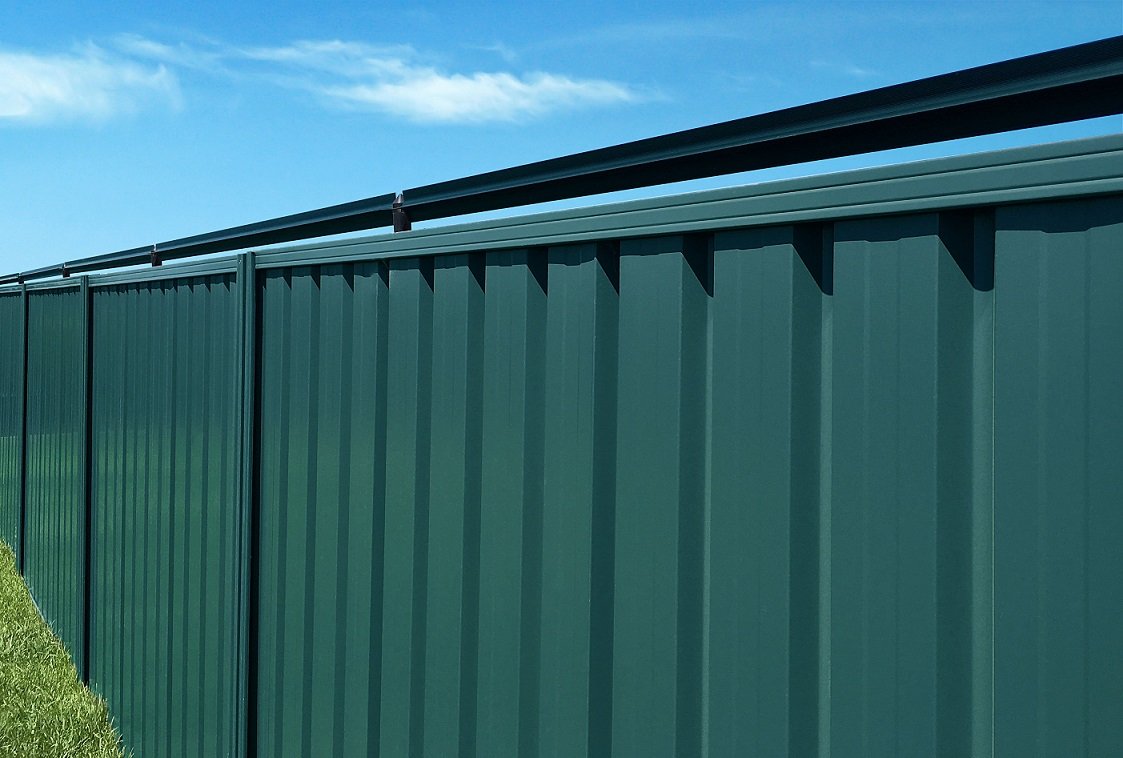
Another popular option is using netting to create a cat enclosure and/or cat run to prevent your cat from escaping, whilst stopping others from getting in. Netting is an ideal material to use for a cat enclosure, as it is very versatile and easy to work with. The quality of the netting is important – cheap netting can sag and perish, while high quality netting is strong and long lasting; look for one that is UV tested and warrantied for at least 10 years.
Common cat run options using netting include:
- Veranda or balcony enclosures
- Side alley enclosures
- Stand-alone freestanding cat enclosures
- Attached or freestanding cat runs
- Fence line perimeter netting
Cat netting is a simple yet highly effective solution when installed from floor to rooftop. For instance, a veranda or balcony can be fully or partially enclosed with netting to create a safe outdoor haven for your cat. If your house has a side alley, it can also be transformed into a net-enclosed cat playground, particularly if it can be accessed directly via a door, window or cat flap.
There are several Australian companies that will custom design and manufacture a netted enclosure to suit your exact requirements and provide professional installation, but keep in mind that this can be a costly exercise. For considerably less expense, you can purchase ready-to-assemble kits or you can go completely DIY and purchase the individual components required to do the entire construction and assembly yourself.
Custom designed and installed cat runs and enclosures
CatMax offers a tailored design and installation service for their pre-stretched, low-visibility cat enclosure netting. Their netting can be easily customised to create side awnings, garden enclosures, veranda sections, catteries, and roof-top stretches, and they guarantee their installations for 10 years. Freestanding, easy-to-move Caboodle enclosures are also available, as are accessories such as catwalks, staircases and scratch posts. They also sell a netted tunnel that links the enclosure to the house so that the cat can come and go as he pleases. See https://catmax.com.au/.

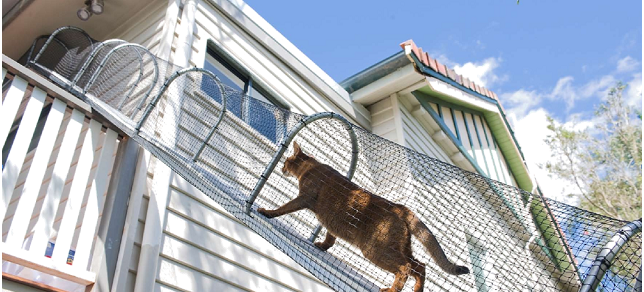
SecureaKat designs and manufactures custom netted cat enclosures for customers Australia-wide using soft, yet super strong, netting which is pre-stretched to prevent sagging. They provide an Australia-wide installation service as well as DIY kits and supplies. Freestanding or attached to the side of your house, balcony, pergola, part or complete gardens, their netted cat enclosures and cat runs can be customised to just about any size and shape. They provide a 10-year warranty against stretch, sag and UV deterioration on their netting. See https://secureakat.com.au.
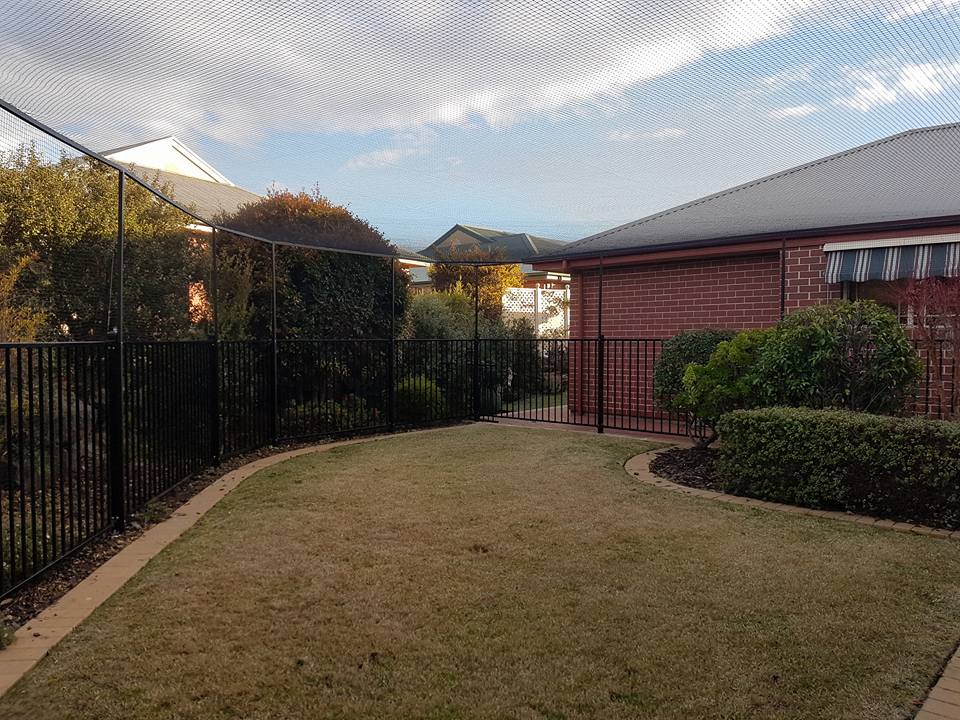
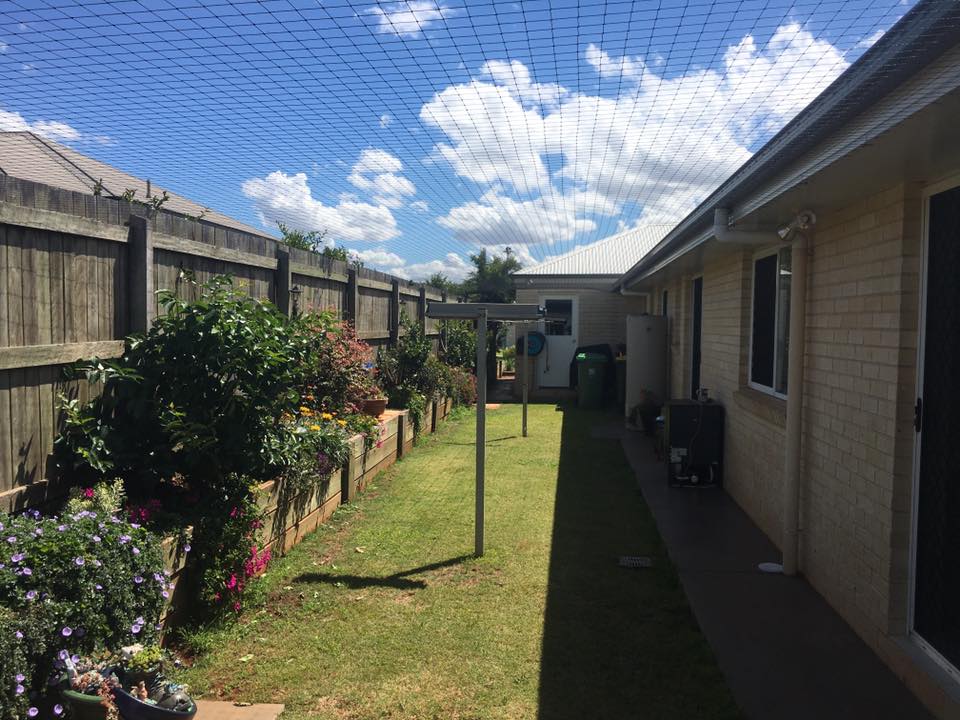
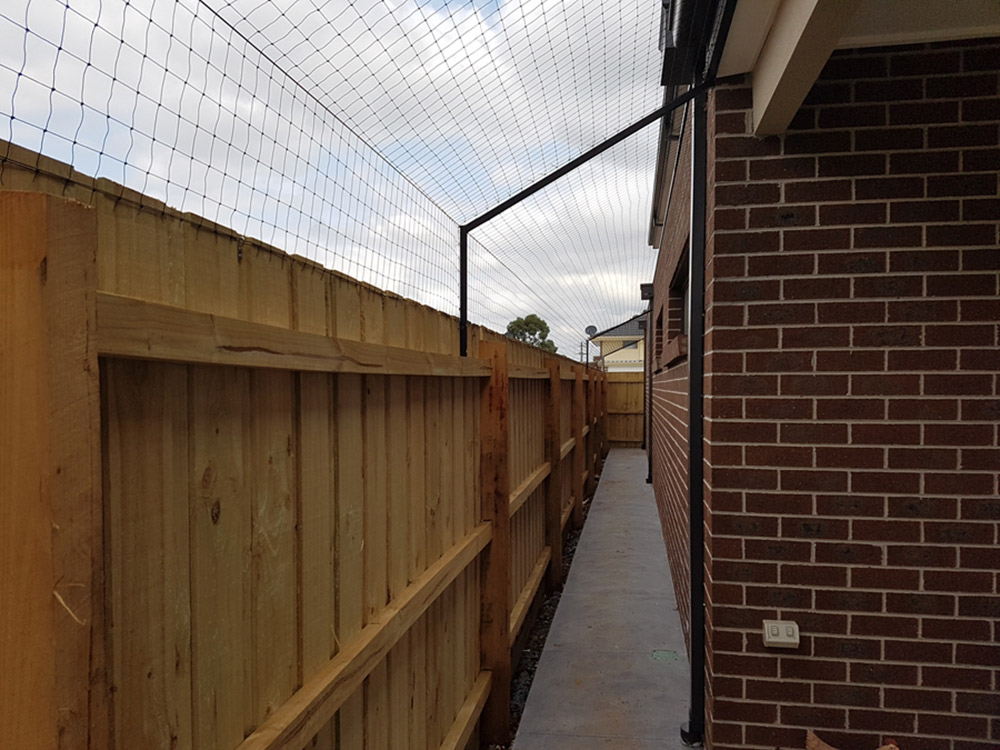
Sydney Cat Enclosures provides premium custom-built cat enclosures to customers in Sydney, Wollongong and Central Coast using unobtrusive UV treated netting along with aluminium structures and stainless-steel accessories. Their work is tradesman quality and all materials used are specifically designed for the local climate. They provide free quotes and a 10-year netting, structural and workmanship warranty. Accessories include skywalks, pet doors and custom play equipment. See https://www.sydneycatenclosures.com.au/.
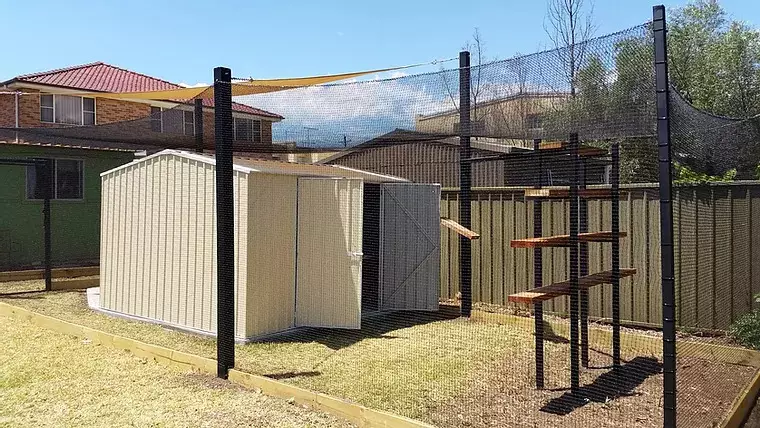
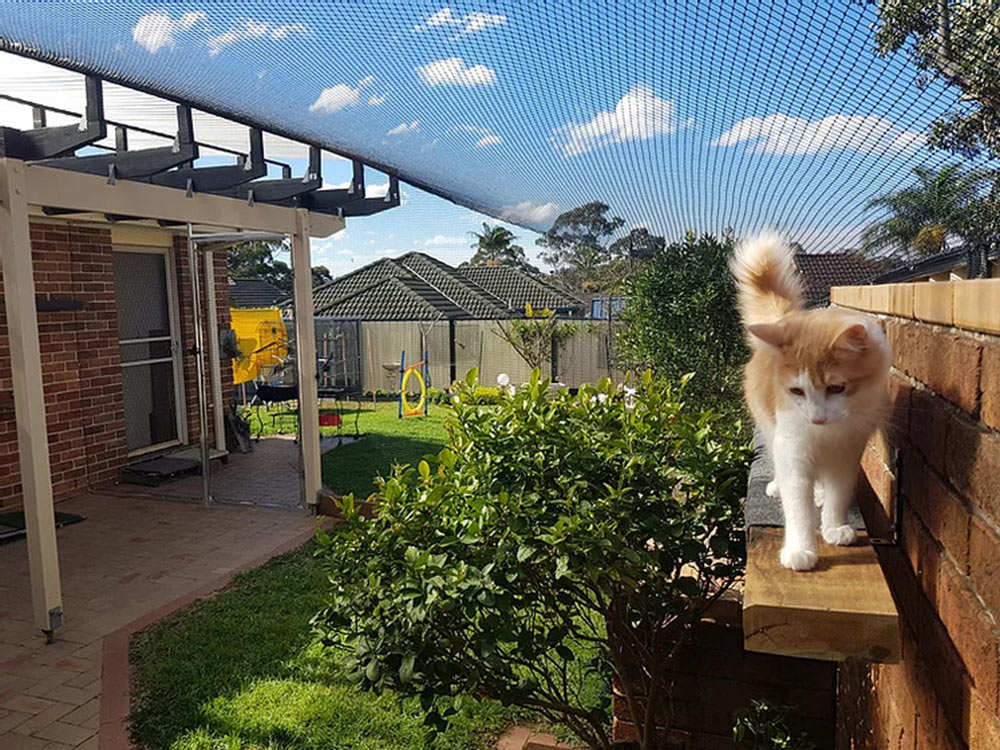
Bow Wow Meow Pet Insurance can help protect you and your cat should an unexpected trip to the vet occur.
- Find out more about our cat insurance options
Off-the-shelf and portable cat runs and enclosures
There are many free-standing enclosures with or without runs available in kit form ready to be assembled. These may also be the best option if you do not own your home, as they can be moved with you; likewise, if you are planning to move to a new house, a free-standing enclosure is probably a more economical and practical choice.
Catnets sells freestanding, portable cat enclosures, outdoor climbing equipment and cat doors. Their modular range of tunnels are 1 metre in length and can be joined together to create a basic or elaborate tunnel system. The tunnels are very sturdy, come completely enclosed in 19mm netting, and have a specially designed hard wearing floor for comfortable movement. See https://catnets.com.au/.
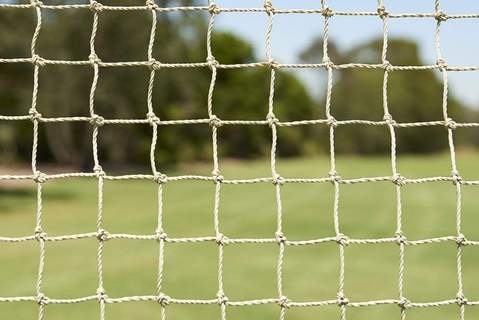

Klever Cages sells outdoor backyard/indoor cat enclosure kits in two sizes – 1m x 1m x 1m and 1m x 1m x 2m. They are light weight and easy to assemble and are therefore great for rentals or even for camping trips. Kits are comprised of UV stabilised connectors and PVC pipes, a hinged door and heavy-duty knotted netting. These items are also supplied separately if you prefer to design and build an enclosure entirely by yourself. Accessories such as hammocks, beds and shade covers are also available. See https://www.klevercages.com.au/.
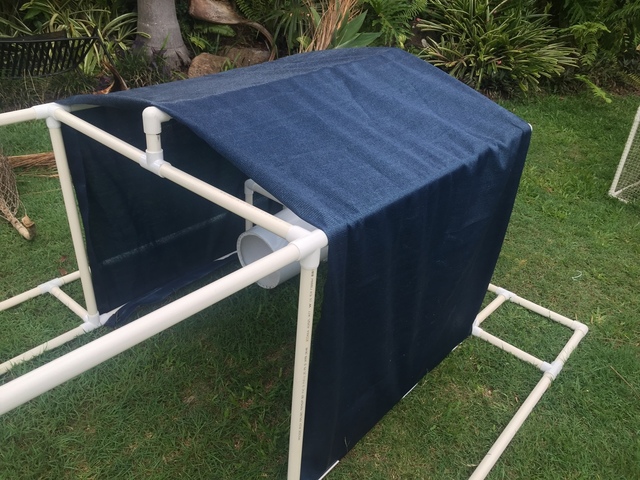
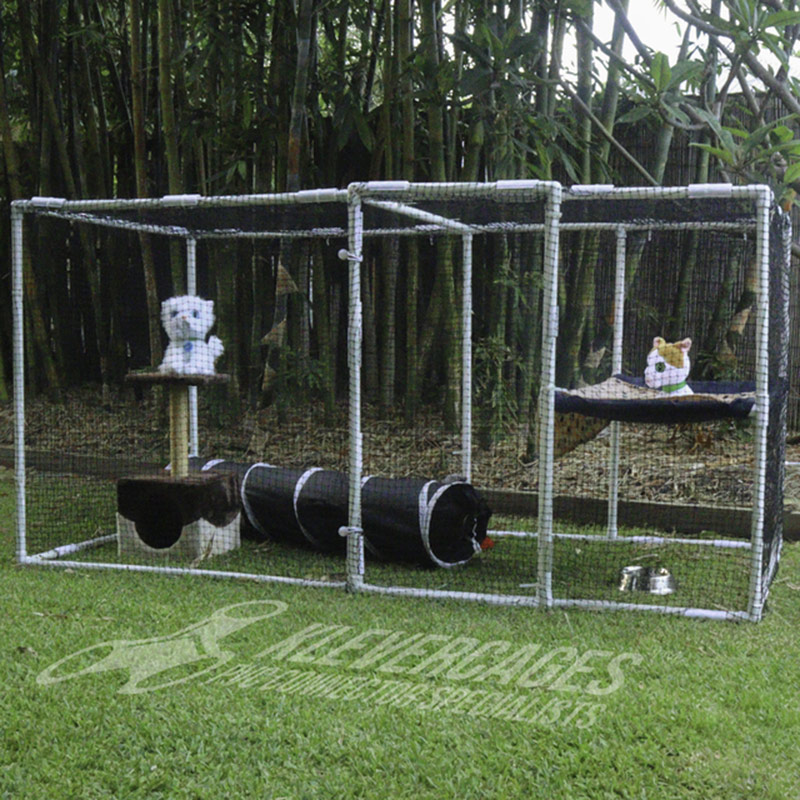
Catnip offers a range of modular cat enclosures for outdoors, along with tunnels, in a flat pack DIY kit. Enclosures are made from 100% Australian steel and come with a 10-year warranty. They are easy to construct, dismantle and relocate, with options available to extend and change them over time, and they can attach to the house via a tunnel and pet door. While buying a kit is better value, you can custom design your own cat playground from their range of modules and tunnels, and there are even modules for balconies, windows and roof attachments. See https://catnip.com.au/.
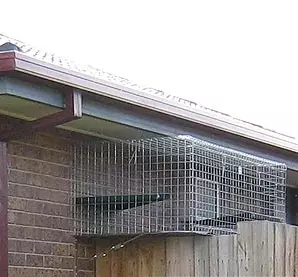
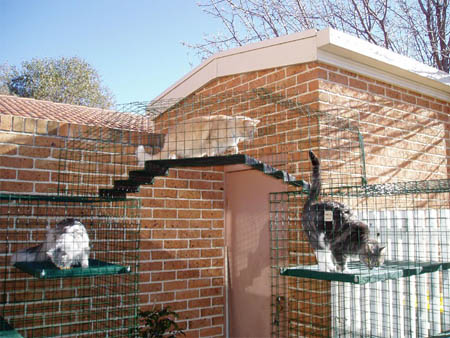
Bunnings sells a cat enclosure and attached run made of black steel wire mesh that is powder-coated to protect it from corrosion. Tough, durable and secure, the enclosure has a removable base tray for quick and easy cleaning – see cat enclosures bunnings.
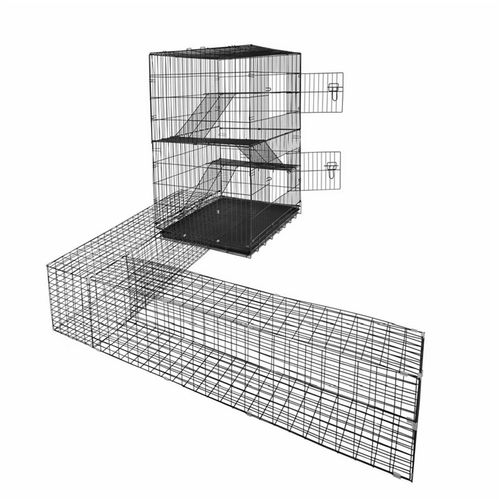
Pop-up tunnels and tents are the simplest, cheapest and most portable options for cat enclosures and cat runs. They can function as cat enclosures for indoors as well as outdoors, taken to the park or on camping trips, and packed away quickly and easily if necessary.
We found this basic tent-tunnel combo on Amazon. Additional tunnels can be added to extend the length of the run.
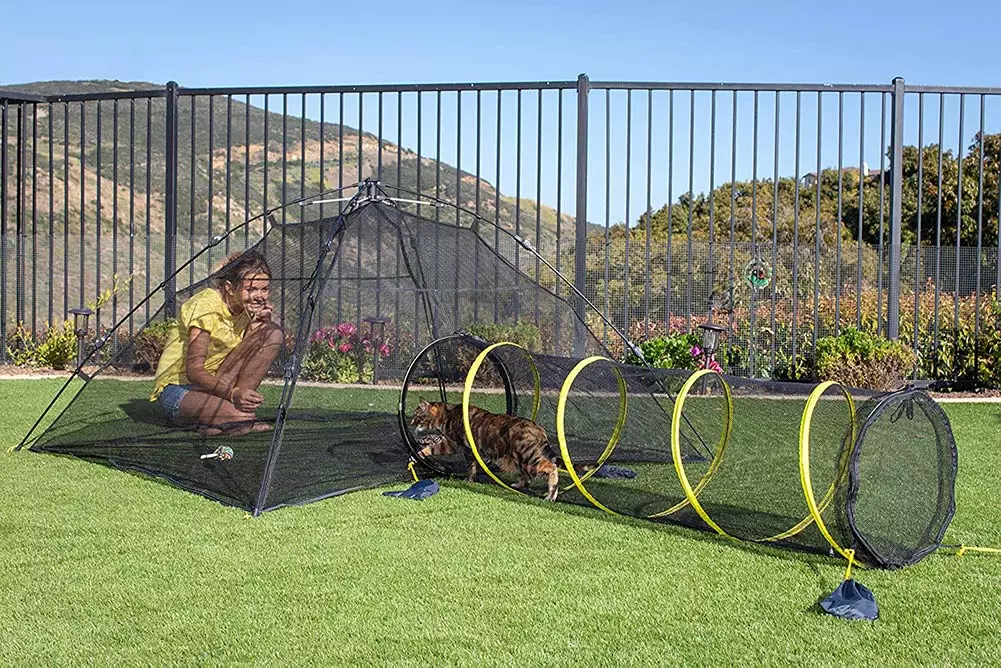
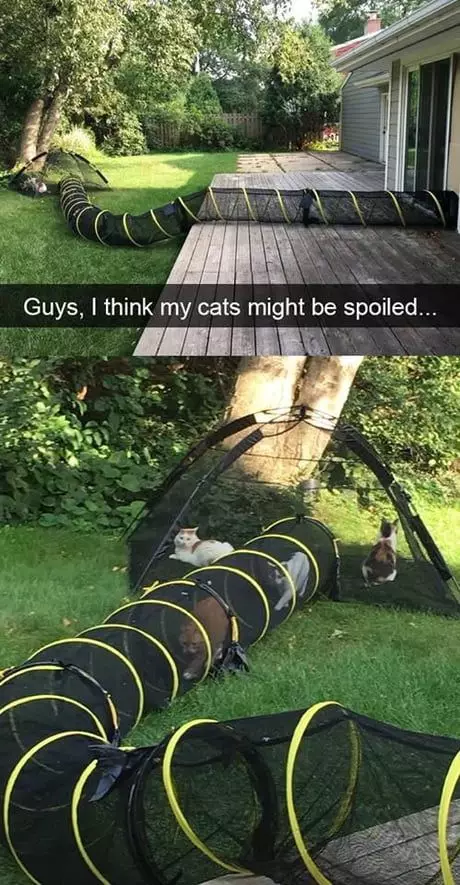
This 300cm long foldable and portable cat run and training tunnel made of green industrial strength fishnet is available from eBay for around $80.

(Source: https://www.ebay.com.au/itm/310354986724?)
DIY Cat Runs
If you are creative and handy with the tools, a DIY enclosure or run can often be the ideal – and cheapest – solution. You have the option to customise to your requirements and come up with your own design, search the web for one of the many freely downloadable plans, or seek advice from your local hardware store.
When determining the size of the enclosure, the NSW cat protection society recommends that each cat requires a metre to themselves. So, for one cat, your enclosure should be at least 1m high x 1m wide x 1m long, while for two cats it should be at least 1m x 1m x 2m, and so on. Ideally, make it as big as you can for your cat to enjoy the outdoors, with enough space and equipment for him to climb, play and snooze in the sun or shade.
CatNets sells cat netting by the metre and in bulk rolls, as well as a range of DIY installation accessories (zippers, clips and fasteners) and DIY kits direct to the public. Their netting is strong, pre-stretched to avoid sagging, UV treated and designed to last in the harsh Australian outdoors. and, outdoor climbing equipment and cat doors. See their FREE DIY GUIDE here.
There are many great examples of DIY cat enclosures and tunnels on the internet; see, for example, this extensive construction from Cuckoo4design, comprising access via a cat door from the living room window into a window box that leads to a lengthy tunnel along the fence, which leads to a spacious, multi-level cat enclosure at the back of the garden.

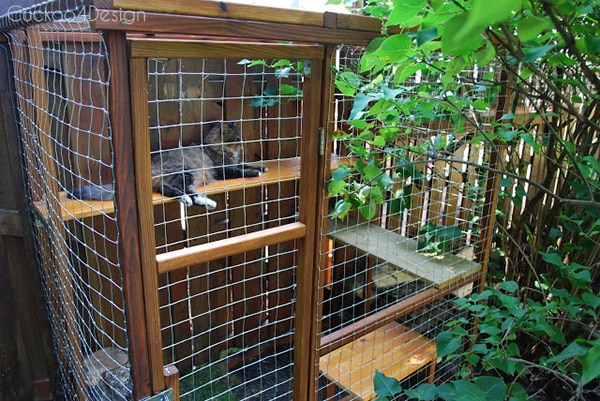
We also like the look of these highly creative DIY designs and constructions to draw inspiration from:
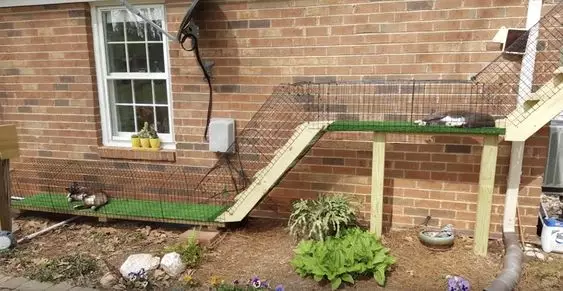
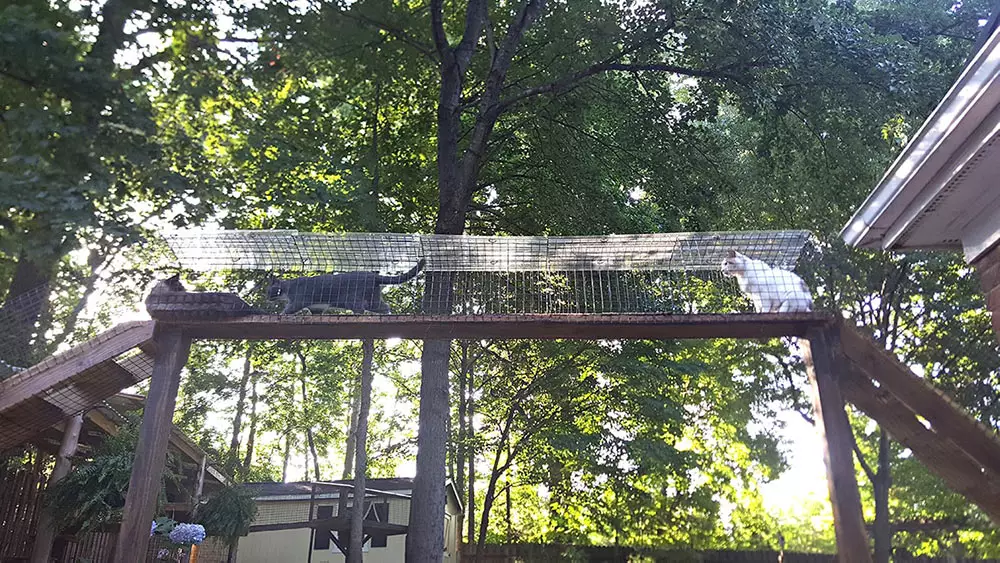
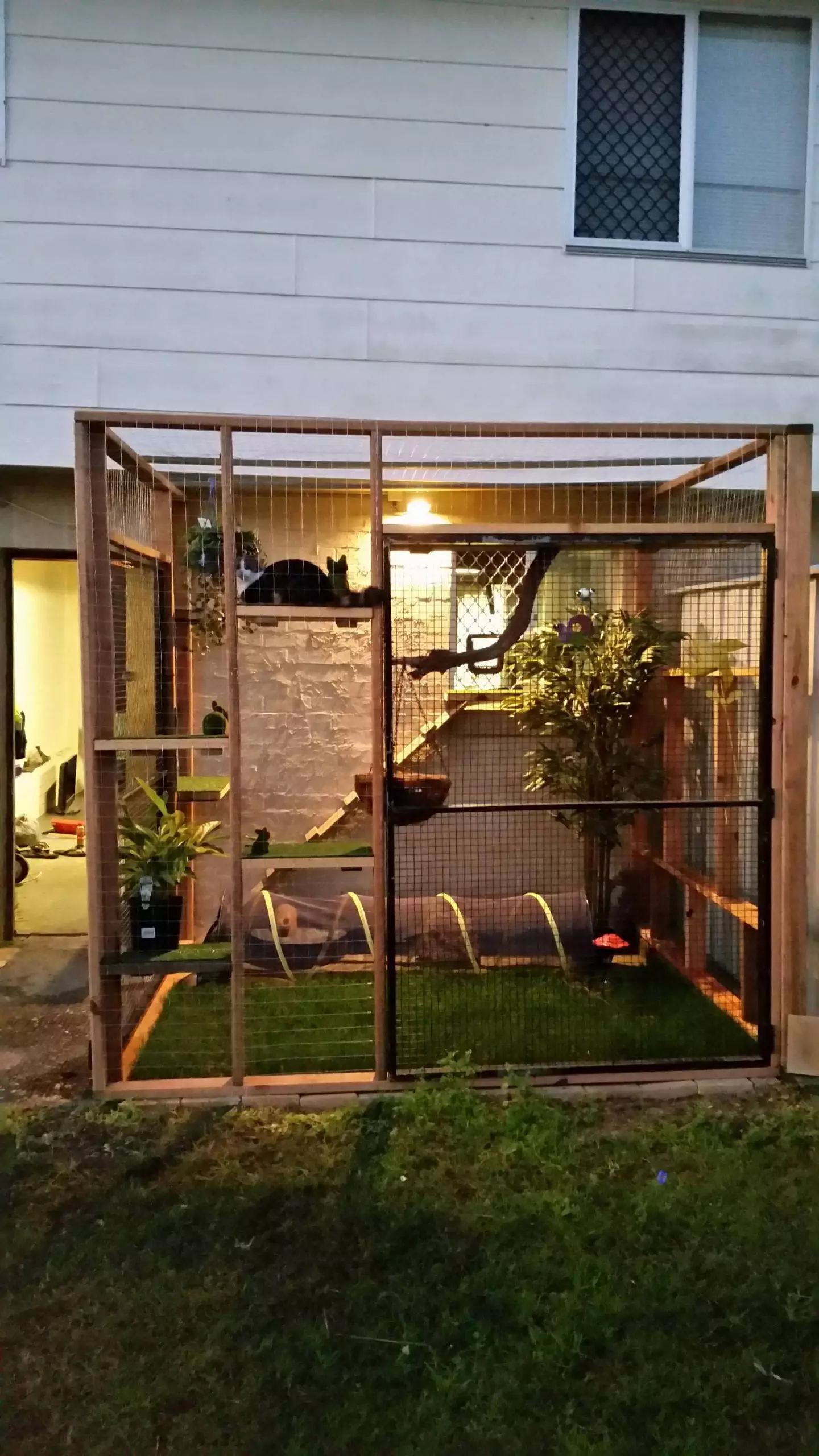
(Source: https://imgur.com/La7bzor)
Apartment living – cat enclosures for balconies
Indoor cats can live happily and successfully in apartments. If you have a balcony, netting can easily and inexpensively transform it into a safe space where your cat can enjoy the outdoors. Transparent or low-visibility netting is available to comply with building regulations and to keep balconies looking neat.
Once your balcony is safely enclosed, add some items of feline interest to transform it into a special place for your cat. Maximise the use of vertical space by installing a series of perches at different heights, which will provide your cat with elevated views over the neighbourhood and can be used for climbing and even napping. A special cat bed can be placed on a perch or in a sunny, sheltered corner of the balcony, while toys can be strategically placed to move or flutter in the breeze. Potted plants such as cat grass, catnip or cat mint, will add to the appeal for your cat.
If you don’t have a balcony, a mesh-enclosed fixture attached to the outside of a window frame (similarly to an air conditioning unit) can provide a spot to enjoy the fresh air and observe the outside world. This can contain a comfy resting spot and some cat-friendly items. If this type of addition isn’t feasible, you can install a comfy, padded perch or shelf indoors, near a sunny window. You can install cat netting or fly screens over your windows so they can be open but cat proof.
